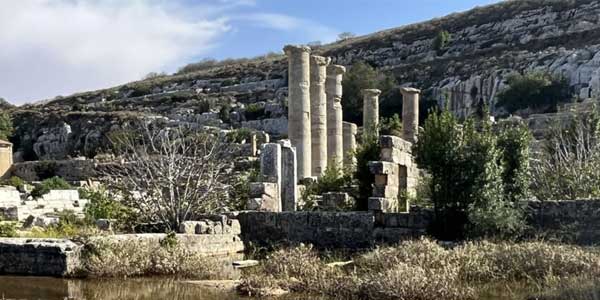The recent devastating floods in the Libyan city of Derna have not only claimed thousands of lives but have also posed a severe threat to one of the country's most prized ancient sites, putting its UNESCO-listed monuments at risk of collapse, as reported by a recent visitor and a leading archaeologist.
The city of Cyrene, renowned for its historic significance and UNESCO-listed monuments, including the remarkable second-century AD Temple of Zeus, larger even than the Parthenon in Athens, has suffered immediate damage. While this initial harm may seem minor, the continuous presence of water around the foundations of these ancient structures raises concerns about potential future collapses, according to Vincent Michel, the head of the French archaeological mission in Libya.
Cyrene's rich history dates back to around 600 BC, when it was established by settlers from the Greek island of Santorini. For nearly a millennium, it thrived as one of the foremost centres of the classical world before a significant earthquake in 365 AD led to its abandonment.
Designated as a UNESCO World Heritage Site in 1982, Cyrene faced added vulnerability when it was placed on UNESCO's World Heritage in Danger list in 2016 due to years of conflict and neglect following the overthrow of Moamer Kadhafi.
Claudia Gazzini, a Libya specialist at the International Crisis Group, recently visited Cyrene and reported that much of the site remains waterlogged days after torrential rains brought by Storm Daniel on September 10 to 11. Ancient walls have collapsed in some areas, obstructing the natural drainage pathways, while murky water continuously emerges from the ruins in others.
If the water remains trapped within the site, there is a risk that retaining walls could collapse, potentially causing significant damage to the ruins. The foundations of the monuments have also been weakened by the widespread presence of water, which is a significant concern given the poor quality of the stone in the region.
French archaeologist Vincent Michel, who has extensive experience with the site, emphasised that while the monuments are still standing for now, the real damage lies ahead. The torrents of water have created gullies in the ancient streets, particularly affecting the Royal Road, and have already weakened the foundations of the monuments. Furthermore, the nearby necropolis has been submerged, impacting some of the tombs.
In addition to the physical damage, there are concerns about potential looting in the aftermath of the floods, which further compounds the threats to Cyrene's heritage.
Despite these challenges, efforts are underway to protect the site. Libya's antiquities department has mobilised rapidly, seeking assistance from Italian and French archaeological missions to safeguard Cyrene. Collaborative actions are being planned to identify vulnerabilities, address drainage issues, and reinforce the foundations of the monuments, with coordination from UNESCO.
While Cyrene has been a popular destination known for its panoramic views, the immediate priorities for Libyans are more pressing in the aftermath of the devastating floods. However, concerted efforts are being made to ensure the preservation of this invaluable historical treasure for future generations.



























